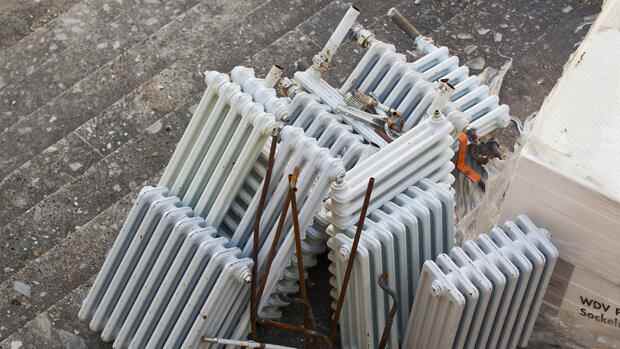Berlin The building sector is one of the major CO2 emitters in Germany. The heating of buildings and the provision of hot water alone are responsible for around 40 percent of energy-related CO2 emissions in Germany. This makes it clear: Germany will not become greenhouse gas neutral without a heat transition.
The sector is therefore under closer scrutiny, especially since the climate targets were broken twice in a row – in 2020 and 2021. The German Climate Protection Act prescribes annual for each sector relevant to climate protection emissions caps. If these upper limits are not met, the responsible departments must develop immediate programs to catch up.
This Wednesday, the economics and building ministries are therefore presenting a catalog of measures for the building sector – with a mix of regulatory requirements, funding programs, a qualification offensive for the installation of heat pumps and serial renovation.
However, a quick remedy is not to be expected, especially since essential details about the measures are still open. The houses led by Robert Habeck (Greens) and Klara Geywitz (SPD) also expect that “the permissible annual emissions in the years 2022-2026 will probably not initially be met,” according to the 14-page paper that is available to the Handelsblatt .
Top jobs of the day
Find the best jobs now and
be notified by email.
From 2027, however, the targets would be “overachieved”; it can therefore be assumed that the permitted emission quantity for the entire period (2022 to 2030) will be complied with.
An overview of the plans for the buildings sector:
Building Energy Act (GEG)
The law is to be amended several times, according to the plan. One of the most important points: The government wants to stipulate by law that from January 1st, 2024 every newly installed heating system should be operated with 65 percent renewable energy. This means de facto that pure gas heaters may no longer be installed from 2024. “This sets a central course for climate protection in the building sector and initiates a trend reversal in the heating sector, which is still characterized by fossil fuel combustion heating systems,” says the emergency program.
At present, around a third of new buildings and three quarters of existing buildings are still fitted with fossil fuel heating systems. The share of renewable energies in building heat is stagnating at around 15 percent.
>>Read also: How quickly you should replace your gas heating
Federal funding for efficient buildings (BEG)
In the future, subsidies are to be focused on the renovation of buildings and, above all, the introduction of the 65 percent rule support. About three quarters of the old buildings were erected before the first thermal insulation ordinance in 1979 and have only been slightly or not at all renovated in terms of energy efficiency.
The coalition is currently working on new funding conditions for the new building, which should take effect from 2023. The focus should be on the emissions over the entire life cycle of the building, but the details are still unclear.
Serial renovation
The aim of the serial refurbishment is to eliminate the industrial prefabrication of to support prefabricated roof and facade elements including the associated system technology. This should shorten the renovation times. Funding should be increased.
Federal funding for efficient heating networks (BEW)
At present, so-called heating networks – often also called district heating networks in urban areas – are still predominantly fed from fossil fuels. Here, too, a change of direction is necessary, which should be financially supported. The construction of new heating networks is also to be funded.
>>Read also: District heating as an alternative heating: It is so attractive for homeowners
Municipal heat planning (KWP), which is to be introduced nationwide, is considered one instrument. Municipalities should thus create a framework for the development of local heat sources, such as geothermal energy. Details are still open.
Heat pump qualification offensive
Heat pumps are considered a key technology in the heating sector, but the planning and installation are technically complex. So that existing heating systems can be converted to heat pumps, there should be targeted further training campaigns for planners and craftsmen.
>>Read also: How the government wants to make heat pumps the standard heating system
Optimization of existing heating systems
A large part of the existing heating systems is not operated efficiently with regard to the individual buildings. A so-called hydraulic balance, through which only the actually required amount of hot water flows into each radiator, should bring improvements at low cost and manageable effort. The government is currently examining various implementation options, including regulatory ones.
The Ministry of Transport also has to make adjustments
The buildings sector is not the only sector to have missed the 2021 climate targets. Volker Wissing’s (FDP) Ministry of Transport must also make adjustments and submit its own immediate program. The traffic light coalition’s original intention of presenting a joint immediate climate protection program (KSSP) has failed.
The coordination process for the major immediate climate protection program (KSSP) across all ministries “could not be completed yet”, according to the immediate program of the Ministry of Economics and Building.
The independent expert council for climate issues appointed by the federal government must now evaluate the measures.
More: This is how the district becomes climate-neutral – three trend-setting projects
